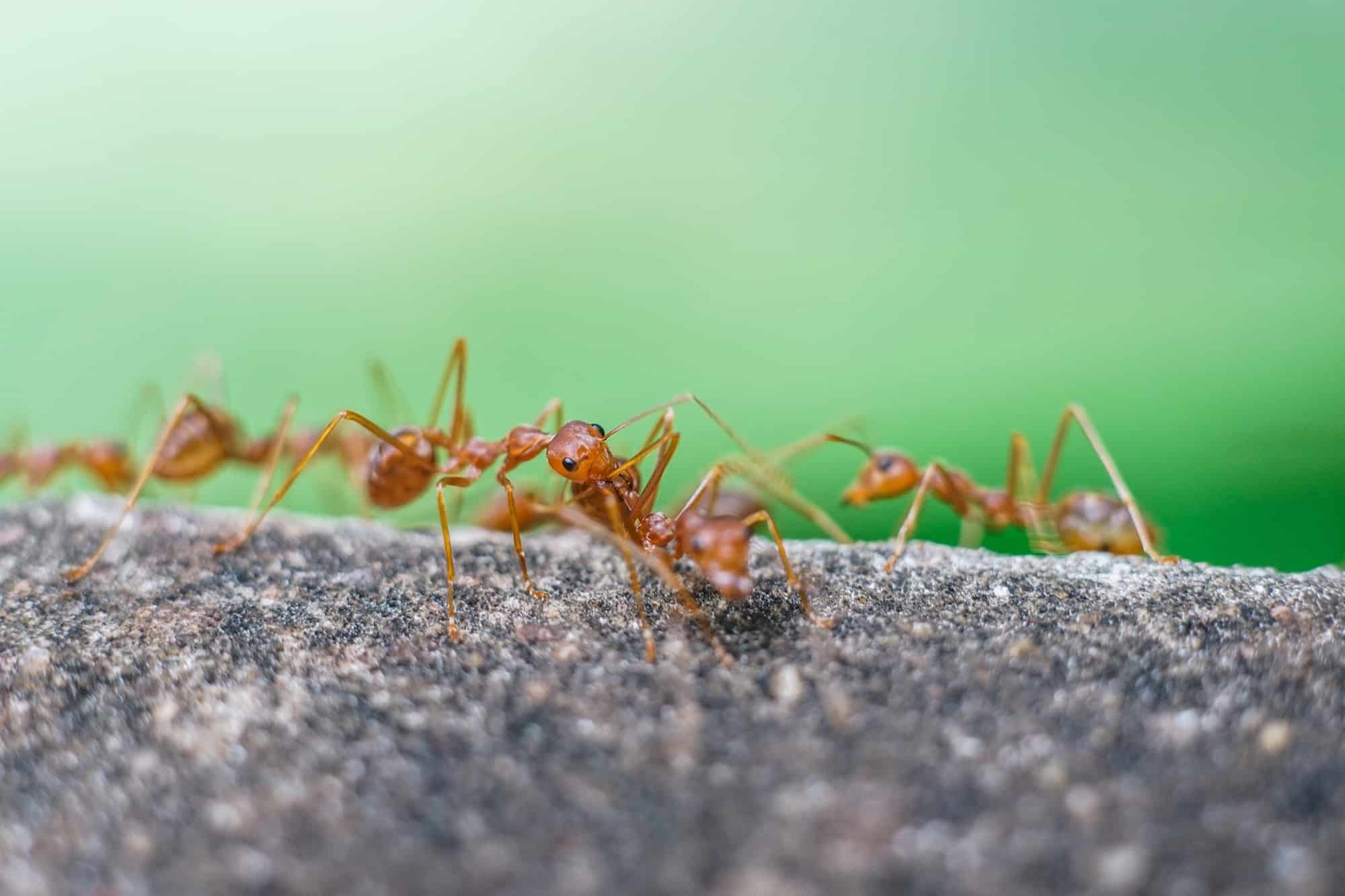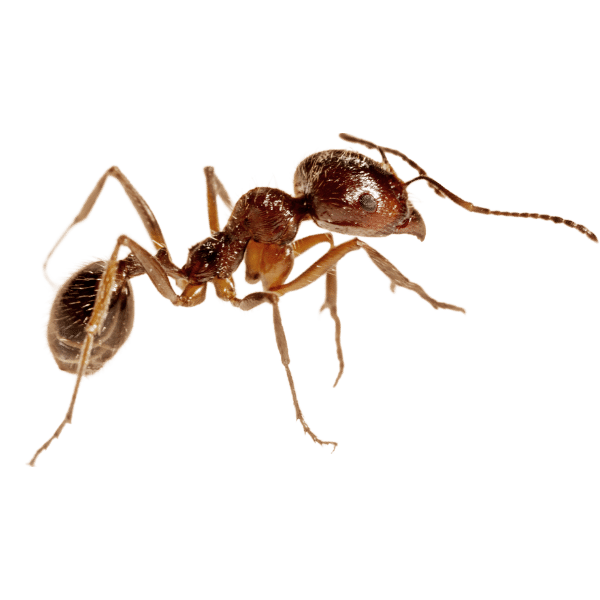Intro to the Insect:
Fire ants are aggressive pests commonly found in North Alabama, where the climate supports their year-round activity. Originally from South America, these invasive insects have become a significant problem in the southeastern United States. Fire ants build large, dome-shaped mounds in lawns, parks, and gardens, often going unnoticed until disturbed. Their painful stings, which can cause severe allergic reactions, make them a health hazard for humans and pets. Additionally, fire ants can damage turfgrass and landscaping, leaving your yard unsightly and unsafe.
Which Ones Are Common in My Area and How Can I Identify Them?
The red imported fire ant (Solenopsis invicta) is the primary species in North Alabama. They can be identified by:
- Color: Reddish-brown bodies with darker abdomens.
- Size: Workers vary in size from 1/8 to 1/4 inch long.
- Mounds: Dome-shaped mounds of fine soil, often with no visible entry or exit holes.
- Behavior: Fire ants swarm aggressively when their mounds are disturbed, delivering painful stings that inject venom.
Observing these characteristics can help you identify fire ant colonies before they become widespread.
How Did I Get the Insect?
Fire ants often migrate into residential areas from nearby fields, woods, or untreated spaces. Factors that attract them include:
- Disturbed soil from recent yard work or excavation.
- Moist lawns with overwatering or poor drainage.
- Outdoor food sources, such as pet food, sugary spills, or other insects.
Recognizing the conditions that draw fire ants can help prevent their establishment in your yard.

What Effects Does This Have on My Lawn or Outdoor Space?
Fire ants pose serious risks to your lawn and outdoor activities:
- Painful Stings: Their venom causes burning, pustules, and potential allergic reactions.
- Lawn Damage: Mounds disrupt turfgrass, making mowing and maintenance challenging.
- Threat to Pets: Pets can suffer multiple stings, leading to pain and swelling.
- Aggressive Colonization: Fire ants establish multiple mounds quickly, spreading across your yard.
The presence of fire ants often deters outdoor activities, making lawns hazardous for families and pets.
How Long Do They Live?
Fire ants have a structured colony lifecycle:
- Queens can live for up to 7 years, laying thousands of eggs daily.
- Workers survive for a few months, constantly replenished by the queen.
- Colonies relocate when threatened, making them difficult to eliminate without professional intervention.
Their persistence requires ongoing monitoring and control measures.
How Do I Prevent Them?
Preventing fire ants involves consistent yard maintenance and targeted control measures. Steps include:
- Inspect Regularly: Check your yard for new mounds, especially after heavy rain.
- Avoid Overwatering: Fire ants thrive in moist environments. Maintain proper lawn drainage.
- Secure Food Sources: Keep pet food, trash, and sugary substances sealed and away from the yard.
- Apply Baits and Treatments: Use fire ant baits and mound treatments to address colonies.
Preventative care and early intervention reduce the risk of infestations, protecting your yard and family.
How Guardian South Helps:
Our experts provide comprehensive fire ant control services, including baiting programs and mound treatments that eliminate colonies at their source. We also offer preventative applications to ensure your outdoor spaces remain fire ant-free, safe, and enjoyable.

